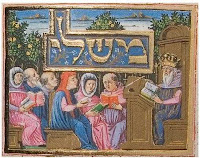As archaeologists dug deeper in the modern kingdom of Jordan, more light was shed on the historical times of King Solomon and the historic kingdom of Israel. By proving a mine found 40 years ago to date back to the 10th century B.C., they theorized that they had constituted a probable contribution to Solomon’s filled treasuries.
Treasure hunters have been looking for King Solomon’s gold mines and treasures for centuries, but never found them. In a place called Khirbat en-Nahas (translates to ruins of copper; no wonder no one ever guessed there might be copper mines there) archaeological excavations had started in the 1970s. So far, the site had been dated to the seventh century B.C., but new finds have shown that the mines had been used much longer and dated back to earlier times.
Based on the latest carbon dating methods and aided by finds of Egyptian art from the 10th century in situ, the archaeologists were sure that the mines had been used in the times of King Solomon. The site was situated in the ancient kingdom of Edom which was a subject vassal state to Israel at the time of King Solomon's reign. Copper was a highly valued trade good and worth as much to the tyrant who controlled it then as it is treasured by his modern Chinese counterparts now.
It follows that the treasure hunters have been widely misled by the myths surrounding that ancient king who governed the united kingdom of Israel and Judea which had been reunited by brute force. One copper mine doesn't produce mountains of riches. More such mines should be situated near to the heartland of the kingdom, as a single mine would not account for the fabulous wealth attributed to King Solomon.
Little is known of the historical king, as all that is known derives from a story in the bible. Probably he is mentioned in dispatches of that time in other kingdoms, but so far nobody could figure out what they might have named him. He must have been a great king for his time, as later storytellers heaped myth upon myth onto his name.
A late collection of common sayings was given his name to make it more important, and poetry was assigned to him as well to make it stand out. He is reputed to have had 700 wives and 300 concubines, add the mythical queen of Sheba to arrive at 1001, the magical number for never ending. All these anecdotal tales, legends, and myths were later collected and turned into one hodgepodge story which found place in a story book collection called the bible.
He must have been very rich, as he rebuilt Jerusalem after the war and erected the legendary first temple containing the mythical arch of the covenant. These riches could not have been amassed from one mine alone, and as Israel was constantly annexing neighboring kingdoms more metal mines should be found in the surrounding countries. If one would take the bible by its word, a plan of expansion could probably be extracted, giving an order of preference by which the kingdom of Israel followed its imperialistic designs.
But no matter how much archaeological evidence there is or will be, the bible will remain a collection of stories contributed to by many writers and collected by humans over centuries, and the Editor cares not to comment. As in Greek mythology, truths might be contained in the most unlikely and apocryphal stories.








No comments:
Post a Comment